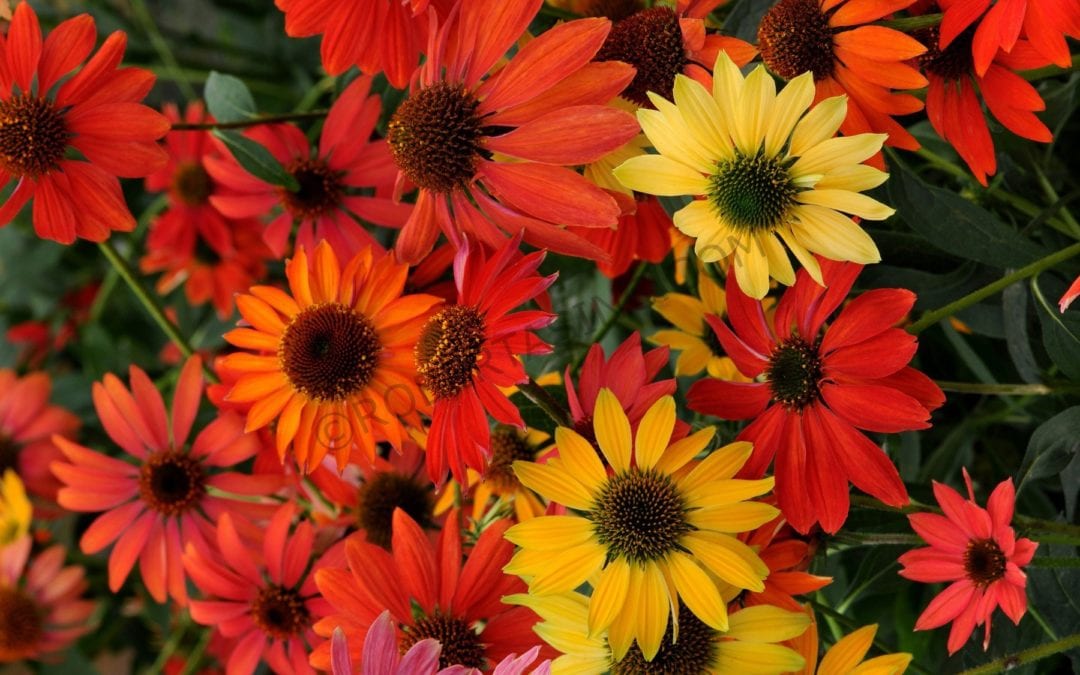At this time of year, one of the questions that I hear most often when I’m in the Garden Center is “What can I plant in the summer?” The answer is almost anything, if you keep a few considerations in mind. As we move into July and August, the weather invariably turns sultry. Lots of heat and humidity, but not a great deal of rainfall. Of course, it has been a fairly wet season so far, but keep in mind that anything you have planted this season or last will require regular, deep irrigation. For trees, shrubs and perennials, that means soaking the root area once a week. The amount of time that you need to water will depend on the size of what you’ve planted. So keep your eye on the rain gauge. If dry weather develops in the late summer and fall, you’ll want to irrigate into November.
And as long as you are in the garden, why not consider popping in a few plants that will add color and drama to your summer borders? One lovely choice is Clethra. The common names Summersweet and Summer Lilac are nods to the lovely fragrance of the blossoms. This small shrub isn’t bothered by heat, but it does prefer some protection from the afternoon sun. The flower spikes on C. Hummingbird are held strongly upright, and when in bloom, the plant is covered with creamy white flowers. Or try C. Ruby Spice for its soft pink blossoms. Summersweet has the added bonus of a lovely clear yellow fall color. It is slow to emerge in spring though, so be patient. You might not see much growth until mid-June.
I can write about Hydrangea any time, but they do look their best in mid to late summer. Those flower heads always call to mind summer cottage gardens. H. Incrediball is a Smooth Hydrangea with flowers as big as dinner plates. I’m not as impressed with the new pink version, Incrediball Blush. The flowers are not as big. Smooth Hydrangeas prefer a damp, shady spot, but some sun is fine as long as it’s in the morning. Another fabulous, easy-care hydrangea species that come into their own this month are the Panicled Hydrangeas. These have elongated, cone-shaped blossoms and thrive in a sunny site with good drainage. The flower clusters are creamy white when they open, but as they mature, change color to a wide range of pinks, from creamy cameo to dusky ruby. The older varieties can grow to be quite large, but the newer introductions are more reasonably sized for smaller spaces. Fire and Ice is my new favorite, turning a stunning shade of deep rose. It also has unusual burgundy stems, something for which Hydrangeas are not known.
Mid to late summer is when the ornamental grasses reach star status. Most of them will begin to bloom soon and later get some hints of fall color. For sunny spots, I am crazy about the 4-foot tall flowers of the Moor Grass Skyracer. They tremble and sway in the slightest breeze. And you can always count on the bright gold of Japanese Forest Grass to brighten a shaded corner.
For showier flowering perennials you can’t beat the color range of Coneflowers. Any garden border can use a coneflower, whether you fall in love with the brilliant coral of Sombrero, the glowing chartreuse of Green Jewel or the bright red of Cheyenne Spirit. We may wilt when the summer heat returns, but these prairie plant descendants will be laughing.

